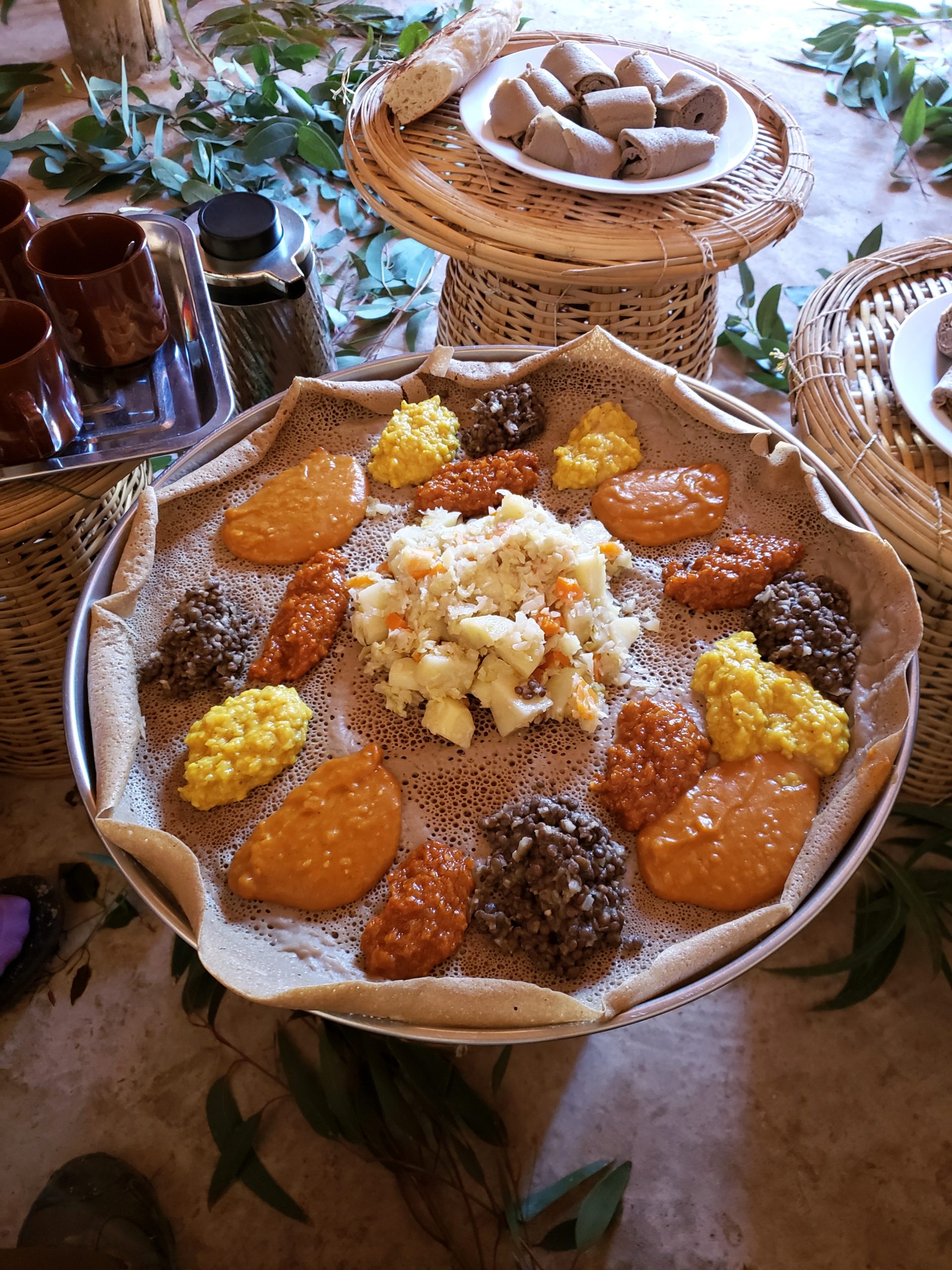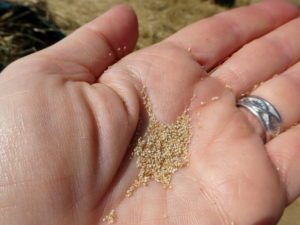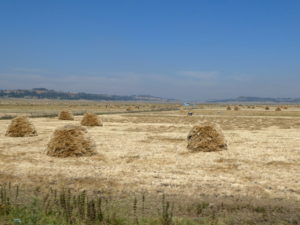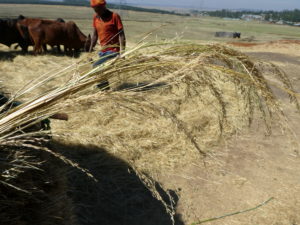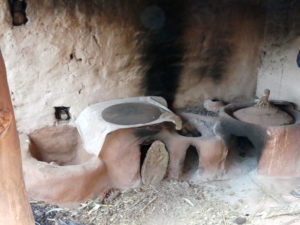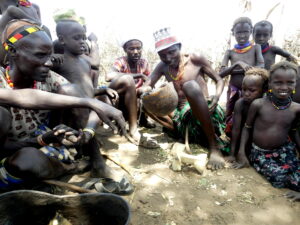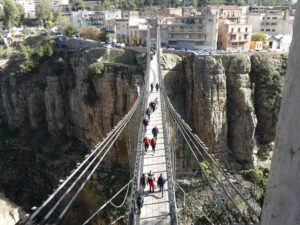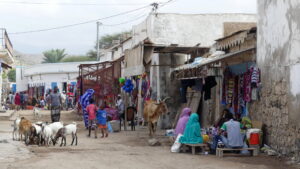The staple food of Ethiopia is a spongy, slightly sour or citrusy, flatbread called injera, a food dating back at least 6000 years.
It’s made of the tiniest of grains, a superfood grown in the highlands called teff. The name is believed to come from the word for “lost,” as the minuscule grains can disappear easily among its sheaves.
Teff produces a bread that contains a balance of nutrients, no gluten, plus a very high fiber and iron content.
Harvesting the teff is a labor intensive process, with workers crouching to use a hand scythe to cut the sheaves of the grain.
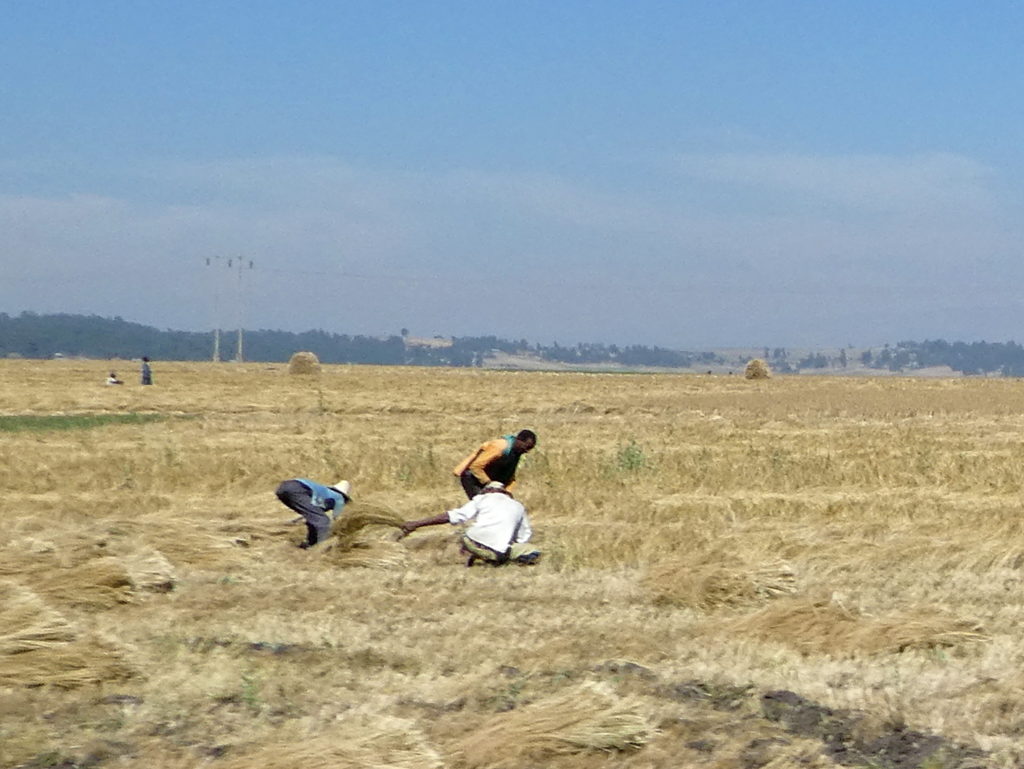
Ethiopian farmers then follow low-technology methods used for centuries by harvesters of grains around the world. The sheaves are stacked in the familiar dome shape
Workers later spread the harvested sheaves from a stack onto the ground, winnowing by hand and with pitchfork.
To finish the job, a yoked group of cattle circle around and around crushing the teff stalks to loosen the small kernels from them.
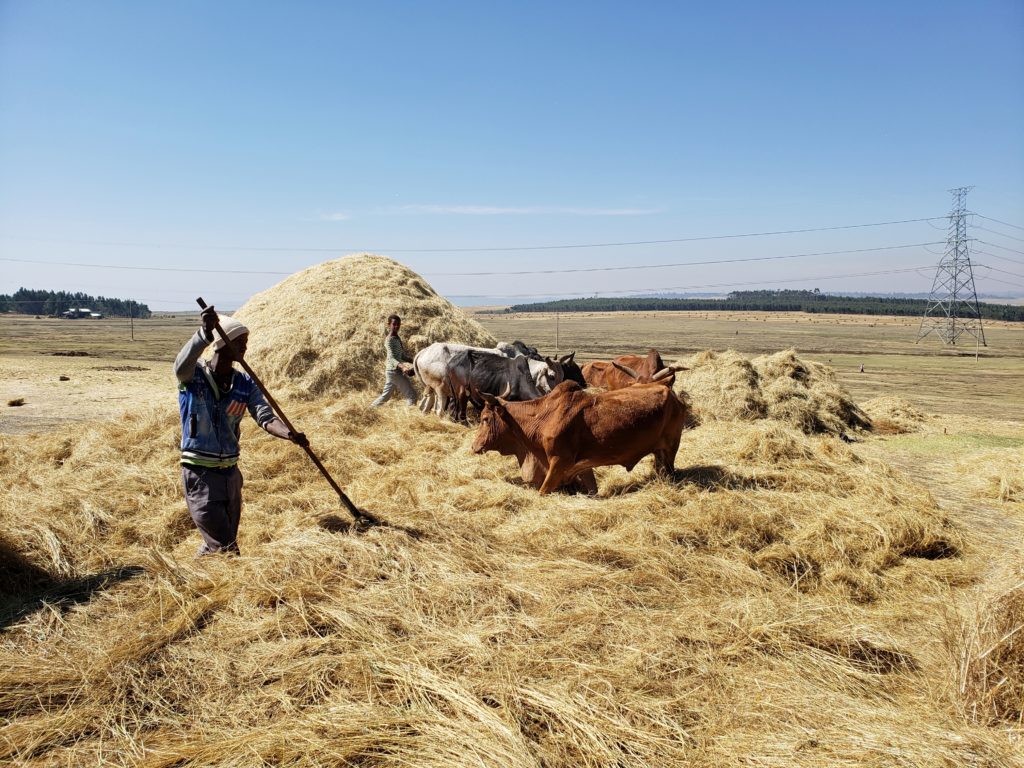
Injera comes in two colors based on the grain, one light like these and the other richly dark red. We did not see it offered so much, but the reddish grain seemed more flavorful to us.
The bread is cooked like a pancake or galette/crepe, as the flour paste is poured on a large flat hot clay plate using a spiral pattern. The clay plate, like the broad circle shown here in a village kitchen, is typically 16 inches or so (40 cm) in diameter. In the village, heat came from burning hot wood chips below the plate.
Injera is smooth on the bottom, but spongy to the palate and the eye because its own natural yeast sends bubbles through the top surface as it cooks.
Finally, the full feast is placed on the injera.
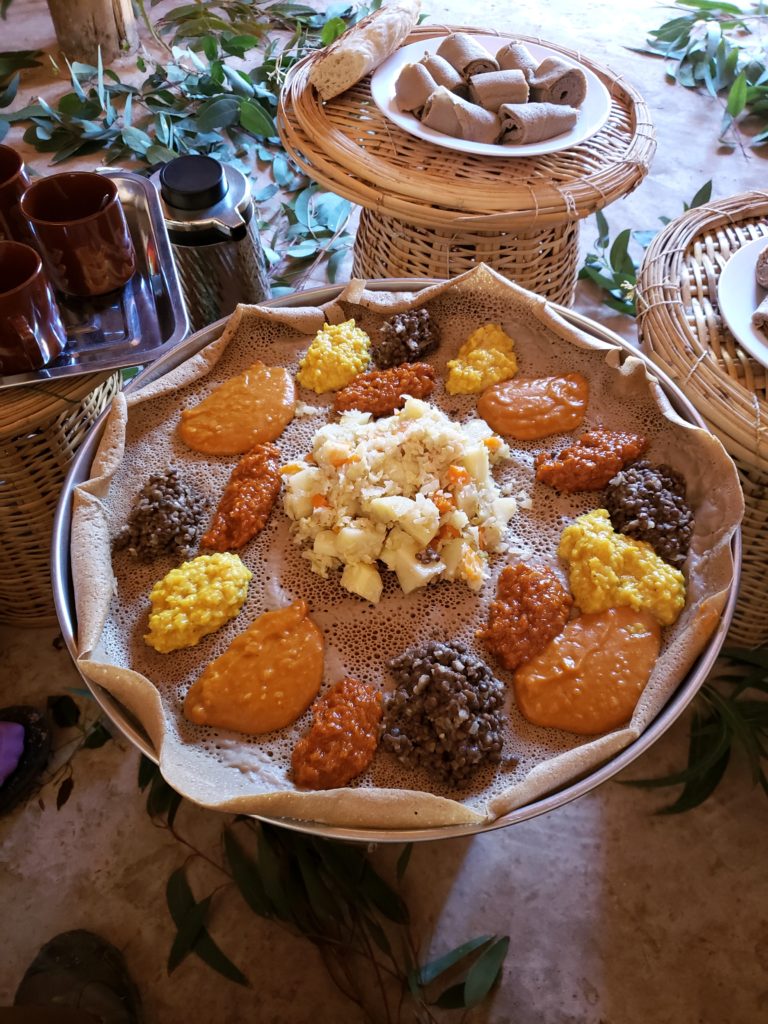
An order – even for two – is typically huge, family-sized, generally with unlimited chickpea paste, and a host of other options, plus all the injera you can stand. Extra injera comes in long rolls delivered on a side plate.
Among the many mix options: lentils, spinach and potato, chickpea pastes (called shiro or tagabino), cabbage, meat stews, and so on. Even spaghetti, a newer staple of the Ethiopian diet due to the occupying Italians of the past, is eaten by grasping the noodles with a chunk of injera. Chili sauce is a usual staple on the side.
No utensils are needed. Locals eat everything by pulling off a chunk of injera and grasping sauces, stews, lentils, veggies, chickpea pastes, etc., with the chunk. By custom, you use only your right hand, if you can get the hang of one handed scooping.
Even at the tiniest eateries, you can find a place to wash your hands before eating and, to clean up the messiness, afterwards. Or the washing can be ritualistic as your host pours water over your hands into a basin.
Once your hands are washed, you tear off a good-size piece of the injera, then grasp the sauces or various mixtures with it. Then as neatly as possible you stuff the filled wad of injera into your mouth.
We soon mastered the technique.
(To enlarge any picture above, click on it. Also, for more pictures from Ethiopia – along with Eritrea and Djibouti -, CLICK HERE to view the slideshow at the end of the itinerary page.)


